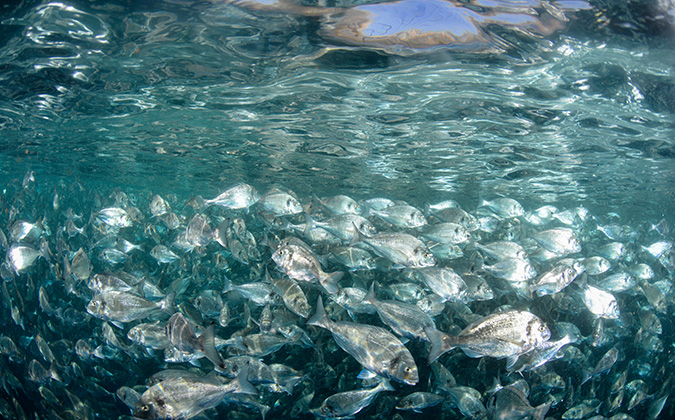
High stocking density linked to skeletal issues in juvenile sea bream
Lower stocking densities could reduce the frequency of skeletal deformities in young gilthead sea bream, increasing fish welfare and productivity.
New research carried out in Italy and Spain tested different tank volumes and stocking densities of the species, suggested by the Italian Association of Fish Farmers, using fish in the hatchery and pre-ongrowing phases, where they are at most risk of skeletal anomalies.
Three densities (low, medium and high) were tested in tanks of 500 and 1000 liters, with all other rearing parameters kept the same. A technique known as alizarin staining was used to assess the skeletal condition of juveniles at the hatchery, while sub-adults from the pre-ongrowing phase were radiographed.
Youngest fish affected
In the hatchery experiment, survivorship, dry weight and length of fish were significantly higher in low-density conditions, Zachary Dellacqua, who led the study, told an audience at the Aquaculture Europe conference.
Abnormalities of the cranium and operculum (bones covering the gills) were more prevalent under high-density conditions, while the lower-volume tanks also had an effect on cranial anomalies. Dellacqua grouped skeletal anomalies across the whole juvenile fish for further statistical analysis.
“Comparing the low-density and high-density conditions, the majority of these skeletal-anomaly groups showed significant results between low and high density,” he said.
Spinal deformities added problem in sub-adults
Among the sub-adults in the pre-ongrowing phase, the same trend in regard to stocking density and skeletal abnormalities was seen. There were no differences in weight between the populations kept at different densities, although the high-density environment produced shorter fish.
Deformities in the underbite and operculum of the fish were linked to both higher density and lower tank volume, Dellacqua said. Deformity of the spine was also observed among the older fish — something not seen at the hatchery.
Such deformities in farmed fish can have a significant economic impact, while also leaving the animals susceptible to pathogens and other welfare issues. Deviation in high-density environments or elevated metabolic factors related to stress may be the cause of the physical changes seen, he suggested.
Further work looking at skeletal health in other fish species, and possible interventions, is being carried out as part of the EU-funded BioMedAqu project.






